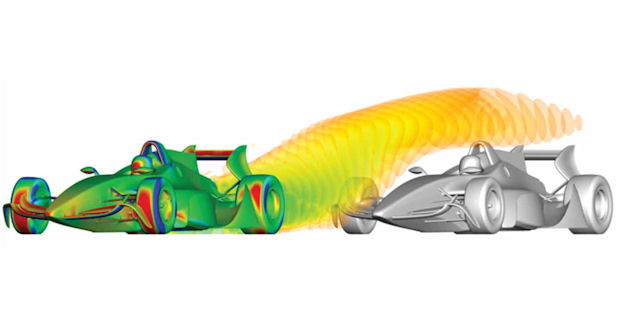Making Cars Go Faster with Platform HPC
Latest News
November 14, 2014
 Dear Desktop Engineering Reader:
Dear Desktop Engineering Reader:
Here’s a quick read packed with all sorts of hot stuff: Racecars, jets, composite structures, high-powered analysis and high-performance computing (HPC).
“Swift Engineering – Making Cars Go Faster with Platform HPC” is a six-page PDF that’s fun to read. It has some terrific quotes from real-life engineers on dealing with lots of data, building their own HPC setup and realizing that they needed a professional HPC configuration so that they could get back to being engineers.
Swift Engineering is a recognized leader in the design and manufacture of composite structures. They have expertise in things like conventional and military aircraft. But they began operations more than 30 years ago as a constructor of world-class, open-wheel racecars. That being in their DNA, they expanded their portfolio to include racecars that hit 200 mph. They’ve done pretty well with that. They have produced over 500 formula racecars and have been flagged in as the winner of more than 40 national and international racing championships. But it was a jet that really changed the operations.
Swift has headquarters in San Clemente, CA, the town where the Nixon Presidential Library and birthplace is located. Under the roof of its 60,000-sq.-ft., fully integrated facility, design and manufacture work side by side. They create volumes of data. Early on, Swift got into HPC with a 16-node cluster built in-house specifically for CFD (computational fluid dynamics) analysis. Swift didn’t have a fulltime IT staff, just a lot of smart engineers.
Eight years back, however, their Eclipse jet project increased demand for CFD beyond the capacity of their original HPC setup. So, they linked a pair of Linux workstations, boosting computing power on the order of 2 fold. Soon, the demand for more CFD analysis horsepower outgrew that cluster quickly. But the writing was on the wall: The associated costs and demands of the homebrewed HPC setup on employee time outweighed its benefits.
Swift turned to Cray for hardware for its HPC solution, purpose-built to meet their demands for efficiency and output, as well as being easy for that part-time IT staff to maintain and manage. The system they deployed consisted of Intel Xeon processor-based Cray deskside and rack-mounted supercomputers combined with IBM Platform HPC cluster management software. Installation through configuration and then getting up and running happened within a week.
Engineers at Swift say that the management software enables them to solve bigger problems with more enhanced graphics at real time speed. They estimate that they can now process vast amounts of data upwards of 50 times faster than before.
The results from these new capabilities came almost as quickly. Swift soon designed a new generation Formula Nippon racecar with an aerodynamic innovation that reduces the car’s aero wake and improves close proximity racing. The aerodynamic package achieves high downforce values efficiently, which results in significantly higher cornering speeds—approximately 4 times greater than gravity.
At the time this paper was written, all of the Platform HPC work at Swift focused on CFD simulations. Crash simulations, FEA (finite element analysis) and more CFD analyses with more complex flow fields including multiple vehicles were on the docket.
The solution also produced another result. Swift felt that the CFD simulation studies it could do on their Platform HPC system were so successful that they decommissioned their onsite wind tunnel.
You can download the complete Swift Engineering Platform HPC case study at the other end of today’s Check it Out link. This is a good way to wrap your workweek. Enjoy.
Thanks, Pal. – Lockwood
Anthony J. Lockwood
Editor at Large, Desktop Engineering
Download “Swift Engineering—Making Cars Go Faster with Platform HPC” here.
Subscribe to our FREE magazine, FREE email newsletters or both!
Latest News
About the Author
Anthony J. Lockwood is Digital Engineering’s founding editor. He is now retired. Contact him via [email protected].
Follow DE






